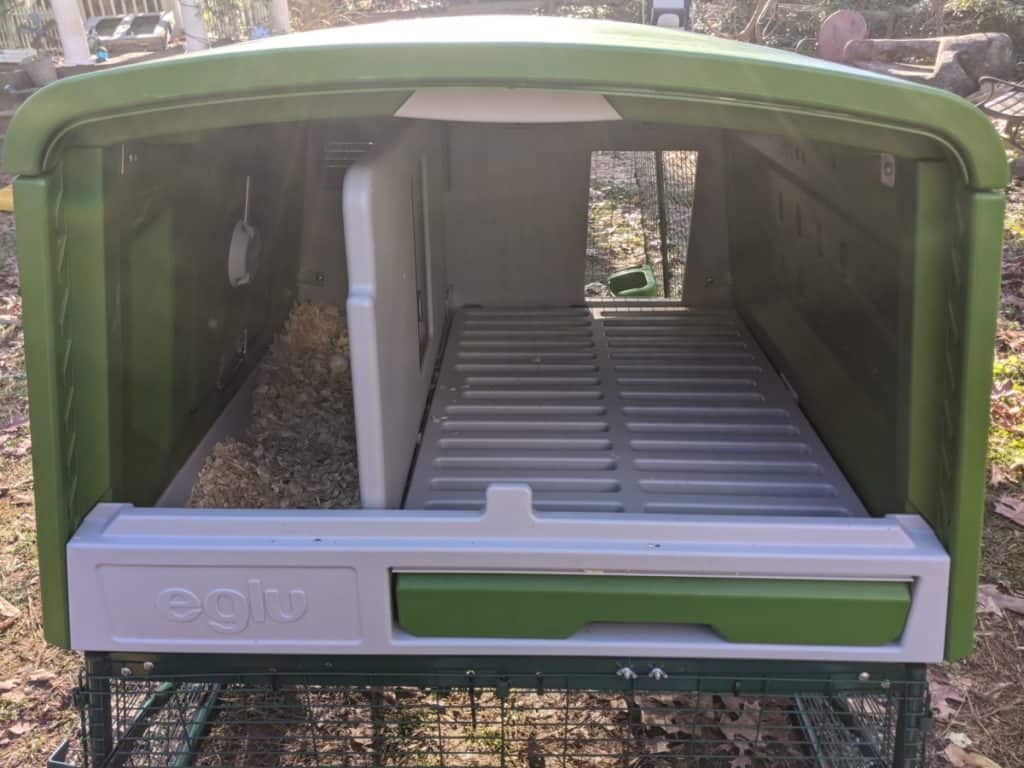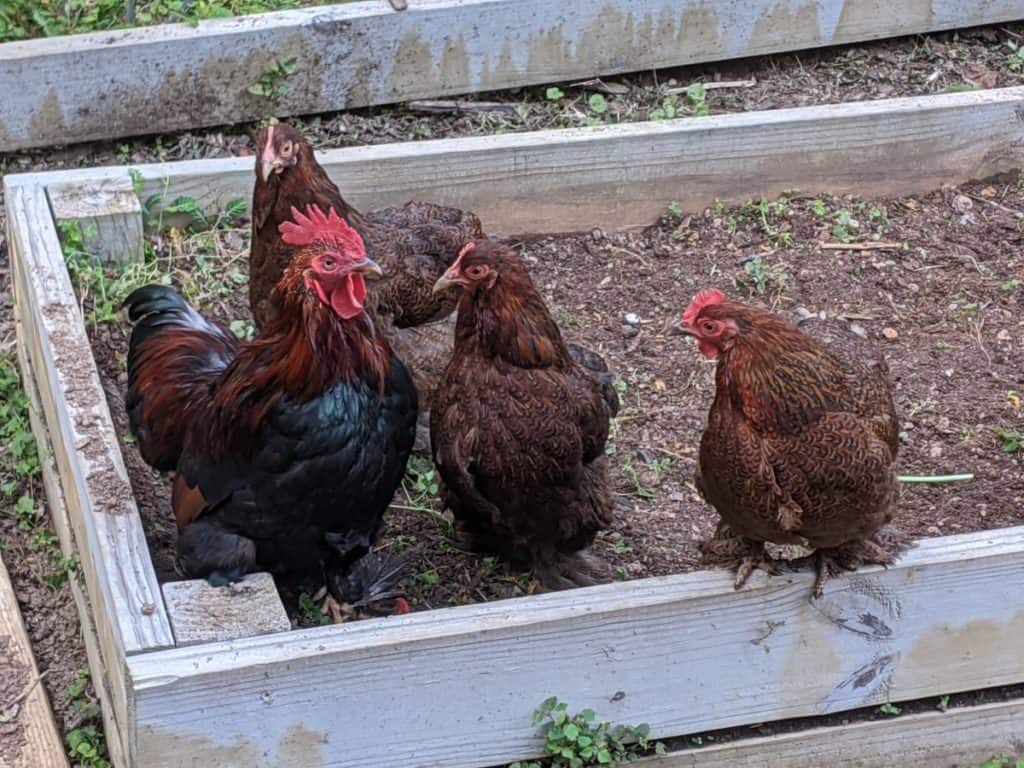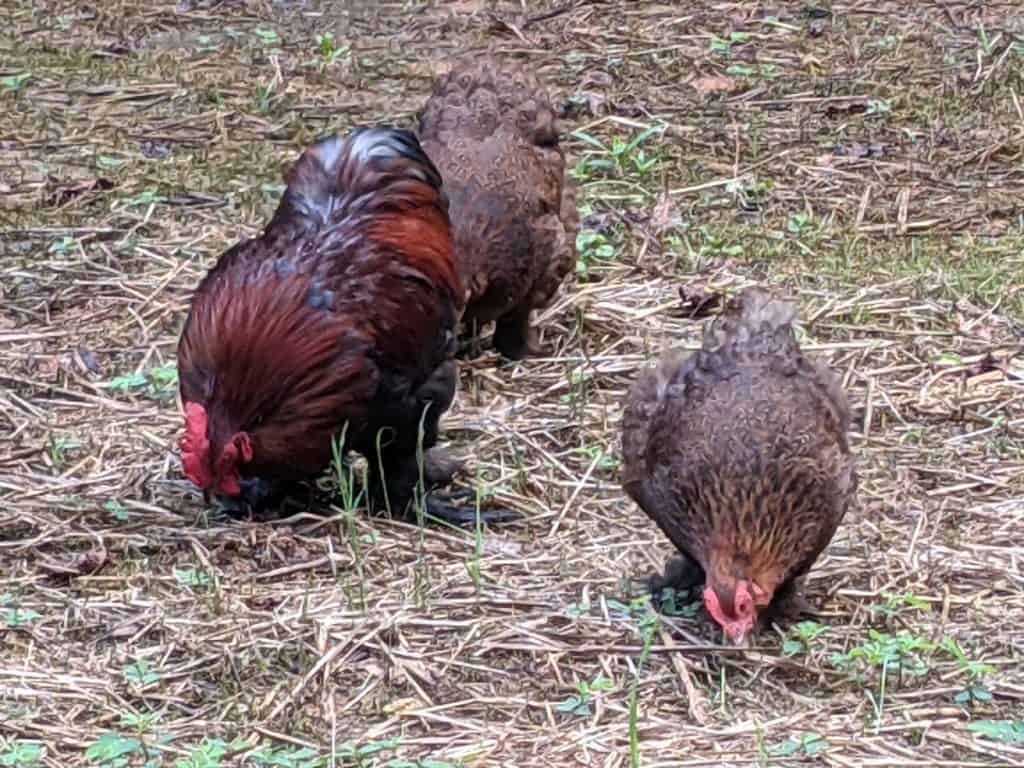Responsible chicken owners want to provide the best living environment for their chickens. Chicken owners need to consider the space that each chicken requires both inside the coop and outside in the run.
Chickens need one to three square feet of space in the coop, and four to ten square feet in the run per chicken. They need ten to twelve inches of roosting area. The size of the chicken breed and the method of keeping the chickens determines the space required for each chicken.
There are several elements that need consideration when designing the space necessary to house chickens. It is imperative to consider how the chickens are managed, the size of the chickens, and environmental factors.
How Much Space Is Needed For A Chicken To Live Comfortably?
The answer to how much space a chicken needs has several different answers depending on several different factors. For new chicken owners, however, it is helpful to have some general guidelines.
The coop is the house where the chickens go to roost or sleep at night. There are a variety of opinions on how much space a chicken needs in the coop. The guidelines range from one square foot to three square feet per chicken.
The outside run or pen is where the birds eat and spend their days outside of the coop. The approved amount of outdoor space for each chicken is from four to ten square feet of space for each chicken.
- How Much Space Is Needed For A Chicken To Live Comfortably?
- How Much Roosting Space Is Needed For Chickens?
- Does The Size Of The Chicken Make A Difference To The Required Space?
- Chicken Husbandry Methods Determine The Space Required
- Problems That Arise From Too Little Space For Chickens
- How Much Space is Needed for Nesting Boxes?
- Problems That Can Arise From Too Much Space For Chickens
- Environmental Conditions Influence The Space Needed For Chickens.
- Conclusions

How Much Roosting Space Is Needed For Chickens?
An acceptable rule for roosting space for chickens is ten to twelve inches per chicken. There needs to be some extra space on a roosting pole as chickens love to flap their wings when settling down or waking up. If the space is inadequate, the chickens on the roosting bar will fall like dominoes if one starts to flap its wings.
Does The Size Of The Chicken Make A Difference To The Required Space?
The size of the chicken makes a definite difference to the square footage required for chickens. A small Silkie or Seabright chicken will definitely not need as much personal space as larger breeds such as Rhode Island Reds, Orpingtons, or Jersey Giants.
The range of recommended space for each chicken reflects this difference. A bantam chicken would be happy with one square foot of coop space and four square feet of run space. An Orpington would require three square feet of coop space and ten square feet of run space.
You may need to alter the roosting space depending on the breed of chickens you keep. Some giant chicken breeds may need more than twelve inches of roosting area and require a studier roosting pole.
Chicken Husbandry Methods Determine The Space Required
The manner in which the chickens are kept influences the space requirements. If chickens spend a long time in their coop, then the amount of indoor space per bird that each chicken needs will increase. If the chickens spend only night hours in the coop, they will have a small space requirement.
Chickens who spend most of their time free-ranging in a large yard or field will not need a large pen or run space. There are chicken space calculators available online. A good calculator needs to take into account breed and husbandry methods. There is a good one available at the Mile Four Organic Chicken Feed website.

Problems That Arise From Too Little Space For Chickens
When chickens do not have enough space, they become stressed from overcrowding. This produces behavioral issues such as bullying, feather pecking, self-mutilation, or even cannibalism.
Ventilation is crucial for chicken health. If chickens are forced into overcrowded accommodation, the ventilation may not be adequate for so many chickens, and respiratory problems arise.
Overcrowding gives rise to a high moisture content in the air, allowing fungal growth in the chicken housing. It also increases the heat in the coop, and chickens can suffer from heat stress.
Another problem arising from overcrowding is that chickens do not have sufficient access to food and water sources. The less dominant chickens will begin to lose weight and will become listless as dehydration sets in. This is why having the right feet per bird is essential.
How Much Space is Needed for Nesting Boxes?
For standard breeds, the smallest box is 10 inches cubes, but most commercial nest boxes are around 11 or 12 inches cubes. Even if you have a big bird like Cochins, a little smaller should suffice for bantams.
Problems That Can Arise From Too Much Space For Chickens
Most people think that you cannot have too much space for chickens, and generally, this could be true with a few exceptions.
If the coop is too large, the chickens may struggle to keep warm in cold weather. The chickens huddle together and generate a combined body heat that warms the coop. A large coop would allow too much heat distribution, and hence the chickens could suffer from the cold.
Chicks need to have the right amount of space. If there is too much space, chicks ‘lose’ each other, the heat source, and the food and water sources.
Chicks in areas that are too large cannot keep warm easily. You will hear these chicks being very noisy and chirping incessantly and urgently as they are uncomfortable and unhappy.

Environmental Conditions Influence The Space Needed For Chickens.
If you reside in a climate zone with severe winters, the chickens may need to spend more time in the chicken coop, which would require more space for each chicken in the enclosure.
Alternatively, you may need to make an enclosed run that allows the chickens protection from the cold while still allowing them to move around and live comfortably.
If you are keeping chickens in scorching hot conditions, they may need more space in the coop to allow them to cool down. Ventilation will be crucial in hot climates.
Conclusions
The space per chicken required for keeping chickens is sometimes a contentious issue depending on the chicken keeper’s personal convictions and ethics. There are some suggestions from chicken keepers that can be used for new chicken owners. Most owners develop experience and get a gut feel for the space needed for their chickens kept in their specific environment.
You will know if your chickens have adequate space by observing their general health and behavior. If the chickens are unhappy because the space is inadequate or is too large, the chickens will be noisy, squabble with each other, and their health may deteriorate.

